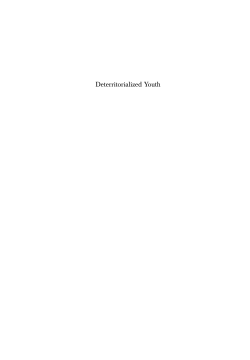
Additional Information
Book Details
Abstract
The Sahrawi and Afghan refugee youth in the Middle East have been stereotyped regionally and internationally: some have been objectified as passive victims; others have become the beneficiaries of numerous humanitarian aid packages which presume the primacy of the Western model of child development. This book compares and contrasts both the stereotypes and Western-based models of humanitarian assistance among Sahrawi youth with the lack of programming and near total self-sufficiency of Afghan refugee youth in Iran. Both extremes offer an important opportunity to further explore the impact which forced migration and prolonged conflict have had, and continue to have, on the lives of these refugee youth and their families. This study examines refugee communities closely linked with the United Nations High Commission for Refugees (UNHCR) and a host of other UN agencies in the case of the Sahrawi and near total lack of humanitarian aid in the case of Afghan refugees in Iran.
"... a valuable, innovative contribution to the anthropological study of refugee youth, as it focuses on refugee populations on hich relatively little research has been done so far... [and offers] a sound methodological approach and rich qualitative data." · Cordula Strocka, Free University Berlin
"This is a well-written, interesting text that offers several contributions to knowledge. First, it provides insight into the experiences of two long-standing refugee populations in the Middle East - Sahrawi and Afghan - for which there is little empirical data. Second, most chapters of the book adopt an inter-generational perspective, providing differential views and experiences of young people, adults and elders." · Christina Clark, Saint Paul University
Dawn Chatty is a Professor of Anthropology and Forced Migration and Director of the Refugee Studies Centre at Oxford University. Her publications include Conservation and Mobile Peoples: Displacement, Forced Settlement and Sustainable Development (co-ed. Berghahn Books, 2002); Children of Palestine: Experiencing Forced Migration in the Middle East (co-ed. Berghahn Books, 2005); Nomadic Societies in the Middle East and North Africa: Facing the 21st Century (Brill, 2006); and Displacement and Dispossession in the Modern Middle East (Cambridge University Press, 2010).
Table of Contents
| Section Title | Page | Action | Price |
|---|---|---|---|
| Deterritorialized Youth | i | ||
| Table of Contents | v | ||
| List of Figures | vi | ||
| List of Tables | vii | ||
| List of Appendices | viii | ||
| Introduction | 1 | ||
| Chapter 1: Identity With/out Territory | 37 | ||
| Chapter 2: The Ties that Bind | 85 | ||
| Chapter 3: Food and Identity among Sahrawi Refugee Young People | 119 | ||
| Chapter 4: Refusing the Margins | 145 | ||
| Chapter 5: Afghan Refugee Youth in Iran and the Morality of Repatriation | 183 | ||
| Chapter 6: Food and Identity among Young Afghans in Iran | 213 | ||
| Notes on Contributors | 249 | ||
| Index | 253 |
